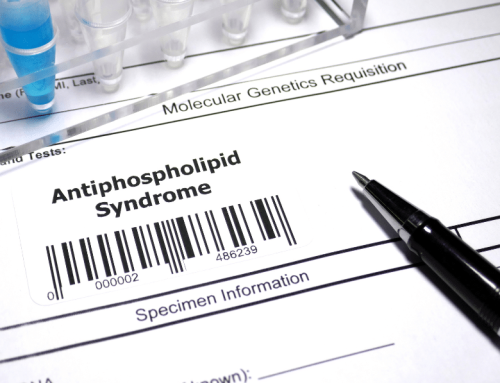 The postpartum period is a time of immense change for women, both physically and emotionally. When choosing contraception after childbirth, women must consider several factors regarding their health, including breastfeeding, hormonal fluctuations, and family planning. One of the most important yet often overwhelming decisions is choosing the right form of contraception. Postpartum contraception requires careful consideration of these factors, as a woman’s body is recovering from pregnancy and childbirth, and family planning goals may have shifted. Balancing these aspects while making informed choices about contraception is crucial for ensuring optimal reproductive health and well-being.
The postpartum period is a time of immense change for women, both physically and emotionally. When choosing contraception after childbirth, women must consider several factors regarding their health, including breastfeeding, hormonal fluctuations, and family planning. One of the most important yet often overwhelming decisions is choosing the right form of contraception. Postpartum contraception requires careful consideration of these factors, as a woman’s body is recovering from pregnancy and childbirth, and family planning goals may have shifted. Balancing these aspects while making informed choices about contraception is crucial for ensuring optimal reproductive health and well-being.
Understanding the Postpartum Body
After giving birth, a woman’s body undergoes several changes that affect contraception choices. For one, ovulation may return at any time, even before a woman’s period resumes. Many women believe that breastfeeding alone provides adequate protection against pregnancy. While breastfeeding can delay ovulation, it’s not a foolproof contraceptive method. This method, known as the Lactational Amenorrhea Method (LAM), is only effective if a woman is exclusively breastfeeding (meaning no formula supplementation or solid foods for the baby) and the baby is less than six months old. Even then, ovulation may occur unexpectedly, leading to an unintended pregnancy.
Also, hormonal changes during the postpartum period can influence how a woman responds to different contraceptive methods. The body’s estrogen and progesterone levels fluctuate significantly after birth, and this can influence the effectiveness and side effects of hormonal contraceptives. It’s essential for new mothers to understand these physiological shifts and how they may impact their choice of birth control.
The Importance of Breastfeeding Considerations
For mothers who are breastfeeding, experts suggest that certain contraceptive options may be more suitable than others. Hormonal birth control containing estrogen is generally not recommended for breastfeeding mothers, particularly during the first six weeks after the baby is born, as estrogen can reduce milk supply. Experts suggest that women who are breastfeeding and wish to use hormonal contraception should consider progestin-only options, as these do not interfere with milk production. Progestin-only methods, also known as the “mini-pill,” along with long-acting reversible contraceptives (LARCs) like the hormonal IUD (intrauterine device) and implants, provide reliable contraception without the risk of decreasing milk supply. Barrier methods, such as condoms or diaphragms, are also viable options for breastfeeding women, as they do not affect hormone levels or breast milk production. However, these methods require consistent and correct use to be effective.
Hormonal Changes and Contraception Choices

For women who are not breastfeeding or who have stopped breastfeeding, combination hormonal methods (which include both estrogen and progestin) may be an option. These include birth control pills, the patch, and the vaginal ring. These methods offer reliable protection against pregnancy, but it’s important to wait at least six weeks postpartum before considering them.
During the initial postpartum period, or about three months following childbirth, women are at a significantly higher risk for blood clots, and estrogen-containing contraceptives can compound this risk. Following this high-risk period, estrogen-based contraception methods may align with a woman’s family planning goals and personal preferences. However, women who have other risks for potentially life-threatening blood clots – including a history of blood clots, a genetic clotting disorder, obesity, smoking, or migraine headaches with aura – should discuss potential nonhormonal contraception options with their healthcare provider. Learn more about hormonal versus non-hormonal contraception options here.
Long-Acting Reversible Contraceptives (LARCs)
Long-acting reversible contraceptives, such as IUDs and implants, are increasingly popular postpartum contraception options due to their effectiveness and convenience. LARCs provide continuous protection against pregnancy for an extended period without requiring daily attention or effort, making them especially appealing for busy new mothers.
There are two types of IUDs: hormonal and copper. The hormonal IUD releases a small amount of progestin, making it a suitable option for breastfeeding mothers. It is highly effective, lasts for several years, and can be removed when a woman wishes to conceive again. The copper IUD, which is hormone-free, is another highly effective option and can last for up to 10 years. Both types of IUDs can be inserted as early as six weeks postpartum, though some healthcare providers may recommend waiting longer, depending on the individual’s circumstances.
The contraceptive implant, which is a small, flexible rod inserted under the skin of the arm, is another progestin-only option. It provides protection for up to three years and can be inserted immediately after birth, even in breastfeeding mothers. LARCs offer an excellent combination of effectiveness, ease of use, and flexibility, making them ideal for many women during the postpartum period.
 Family Planning and Future Pregnancy Considerations
Family Planning and Future Pregnancy Considerations
For many women, the postpartum period is not just about preventing pregnancy but also considering their long-term family planning goals. Some women may want to space out their pregnancies, while others may be finished with childbearing altogether. The choice of contraception can reflect these different goals.
Women planning to have more children may prefer temporary methods like the mini-pill, condoms, or LARCs. These options prevent pregnancy but allow it once discontinued.
For those who don’t want more children, permanent methods like tubal ligation or a partner’s vasectomy may be ideal. While effective, these options require careful consideration as they are not easily reversible.
Empowering Postpartum Women with Informed Choices
Choosing the right contraception postpartum is a personal decision that depends on factors like breastfeeding, hormonal changes, and family planning goals. Healthcare providers must offer clear, non-judgmental guidance to help women make informed decisions that suit their needs and values.
By understanding postpartum challenges and how different methods affect breastfeeding, hormones, and fertility, women can take control of their reproductive health. Whether a woman chooses a short-term method, a long-acting option, or permanent contraception, she should be fully informed and supported in making the best choice for her.
Learn more about women’s health and blood clots here.
Learn more about the emerging role for genetic testing in contraception decision making here.

 Family Planning and Future Pregnancy Considerations
Family Planning and Future Pregnancy Considerations

